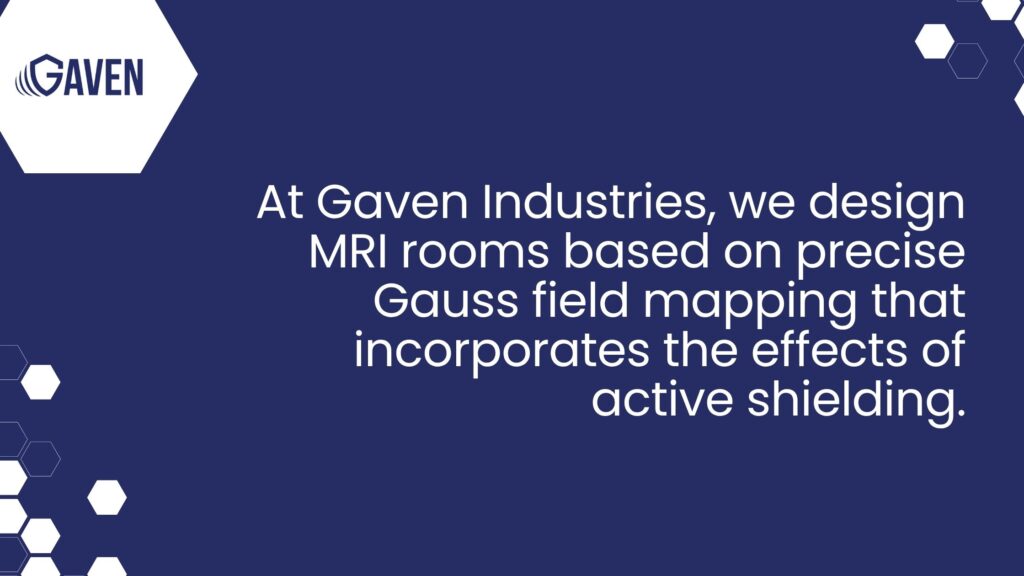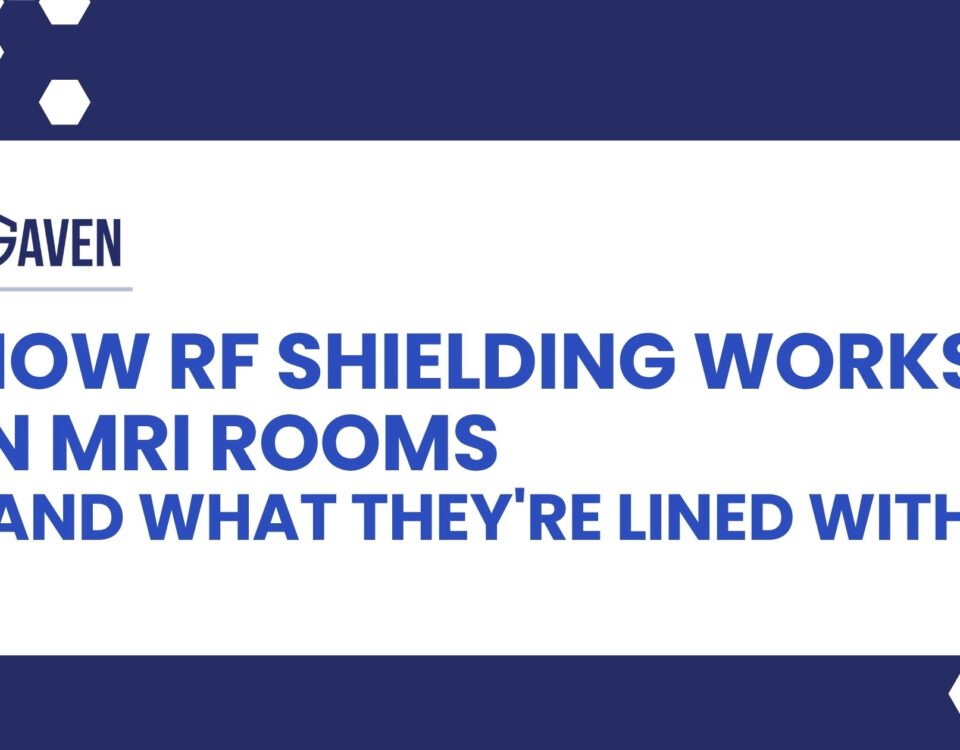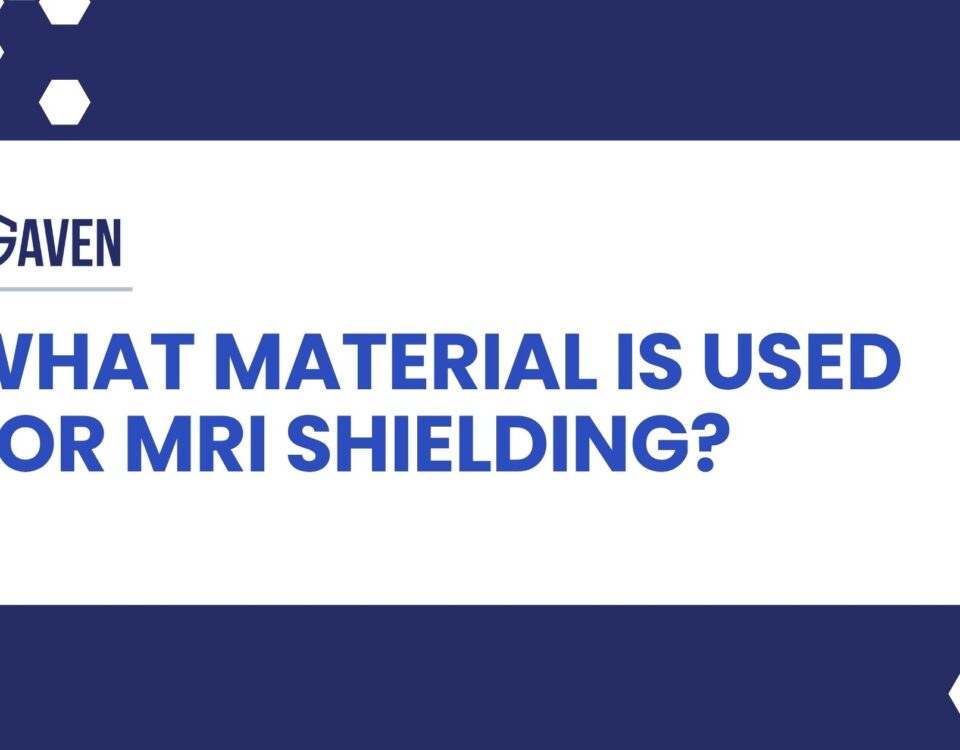


What is Magnetic Shielding in MRI?
July 8, 2025


What Is Passive Shielding in MRI?
July 8, 2025Active shielding is one of the most important—yet least visible—technologies inside an MRI system. While the average patient sees only the scanner, what’s happening behind the panels is a carefully engineered effort to control the enormous energy generated by the magnet. Without advanced shielding, even a standard 1.5T scanner could cause interference with nearby electronics—or worse, create safety risks beyond the room.
This article answers a critical question: what is active shielding in MRI, and why does it matter for safety, compliance, and design efficiency? We’ll break down where it’s located, what it’s made of, and how it complements structural shielding strategies in modern MRI suites.
For a broader overview, visit our MRI Shielding page. Or, if you’re comparing system types, check out Active and passive shielding in MRI for a deeper dive.
What is the purpose of shielding in MRI?
MRI systems generate two primary electromagnetic forces:
- Static magnetic fields, which are constant and extremely powerful—typically 1.5 to 3.0 Tesla in clinical settings
- Radiofrequency (RF) pulses, which are transmitted and received during imaging sequences
Without containment, these fields can:
- Create projectile hazards by pulling ferromagnetic objects into the scanner
- Disrupt nearby devices, including pacemakers, monitors, or computer systems
- Compromise image quality due to RF interference from external sources like elevators, wireless systems, or nearby labs
That’s why every facility must implement magnetic shielding MRI strategies that address both field types. These systems ensure imaging fidelity, protect staff and patients, and maintain electromagnetic compliance with standards such as ACR Safety Zone recommendations and FDA performance criteria.
What are the two types of shielding in MRI?
Shielding in MRI environments is divided into two categories—each targeting a specific risk:
- RF shielding: Prevents external radiofrequency interference from entering the MRI room and ensures the scanner’s internal signals don’t radiate outward. This is achieved with Faraday cage designs, using copper or galvanized steel panels, filters, and waveguides.
- Magnetic shielding: Contains the magnetic fringe field—especially important in areas with limited space or adjacent sensitive equipment. This is achieved through structural materials (passive shielding) and internal coil configurations (active shielding).
Some facilities refer to active RF shielding, but in MRI-specific contexts, this term usually describes electromagnetic countermeasures built into the MRI magnet—not the room.
Whether passive or active, these systems are complementary. One contains magnetic flux; the other blocks electromagnetic radiation. Without both, clinical environments are at risk.
What is active shielding in MRI?
Active shielding in MRI refers to the use of additional electromagnet coils built into the MRI scanner. These coils generate a counter-field that reduces the spread of the main magnet’s static field beyond the immediate scan area.
Here’s what sets it apart:
- It’s integrated into the MRI magnet housing, not added to the room
- It’s calibrated by the manufacturer, based on magnet type and fringe field design
- It helps keep the 5 Gauss line within architectural limits, reducing the need for structural reinforcement
At Gaven Industries, we design MRI rooms based on precise Gauss field mapping that incorporates the effects of active shielding. This allows healthcare facilities to position MRI scanners closer to PACUs, ORs, or data centers without violating safety clearances or requiring costly passive shielding additions.
“Active shielding is the invisible boundary that makes compact MRI room design possible. It shrinks the scanner’s footprint without sacrificing performance or safety.” — John J. Gaviglia, Founder, Gaven Industries

What is active shielding material in MRI?
Active shielding systems use a very different material set than room-based shielding. Instead of panels or steel plates, these systems rely on precision-wound wire and superconducting elements:
- Superconducting wire loops, typically niobium-titanium (NbTi), cooled with liquid helium to eliminate electrical resistance. These form the core of the shielding coil array.
- Copper conductors, used to support gradient switching and magnetic field adjustments during scan sequences.
These materials are embedded deep within the scanner’s internal gradient assembly. Unlike passive components, they cannot be accessed or modified post-installation. Their design is unique to each magnet model and verified during OEM testing.
This level of control enables active RF shielding performance that meets strict attenuation thresholds—often greater than 100 dB across the scan bandwidth—without requiring external materials or structural barriers.
Where is active magnetic shielding located in MRI?
Many planners ask: where is active magnetic shielding located in MRI systems? The answer is inside the magnet itself.
Specifically, active shielding coils are:
- Positioned between the gradient coils and the cryostat, surrounding the main magnetic field source
- Engineered to mirror the magnetic profile of the primary field, but in opposition
- Installed during MRI manufacturing and cannot be retrofitted or field-modified
Because they’re part of the magnet assembly, active shielding simplifies site planning. Facilities don’t have to build large steel enclosures or reinforce walls—especially important in space-constrained environments like urban hospitals or imaging suites in multi-use buildings.
Still, even with active shielding, some projects require site-specific passive shielding to mitigate residual fields, particularly when compliance with the 5 Gauss line demands it. Gaven’s shielding designs always account for both forces, using modeling software and field mapping to predict exactly how the system will behave in real-world conditions.
Get expert support for active and passive MRI shielding
MRI shielding is not just a technical requirement—it’s a clinical imperative. Active shielding reduces the magnet’s footprint, but it must be paired with tested, room-level shielding strategies to ensure safe, compliant performance. Work with Gaven Industries to design an MRI suite that meets regulatory codes, OEM requirements, and real-world clinical demands. Our team supports facilities from initial planning through final testing—with performance guarantees on every shielding system we install.




